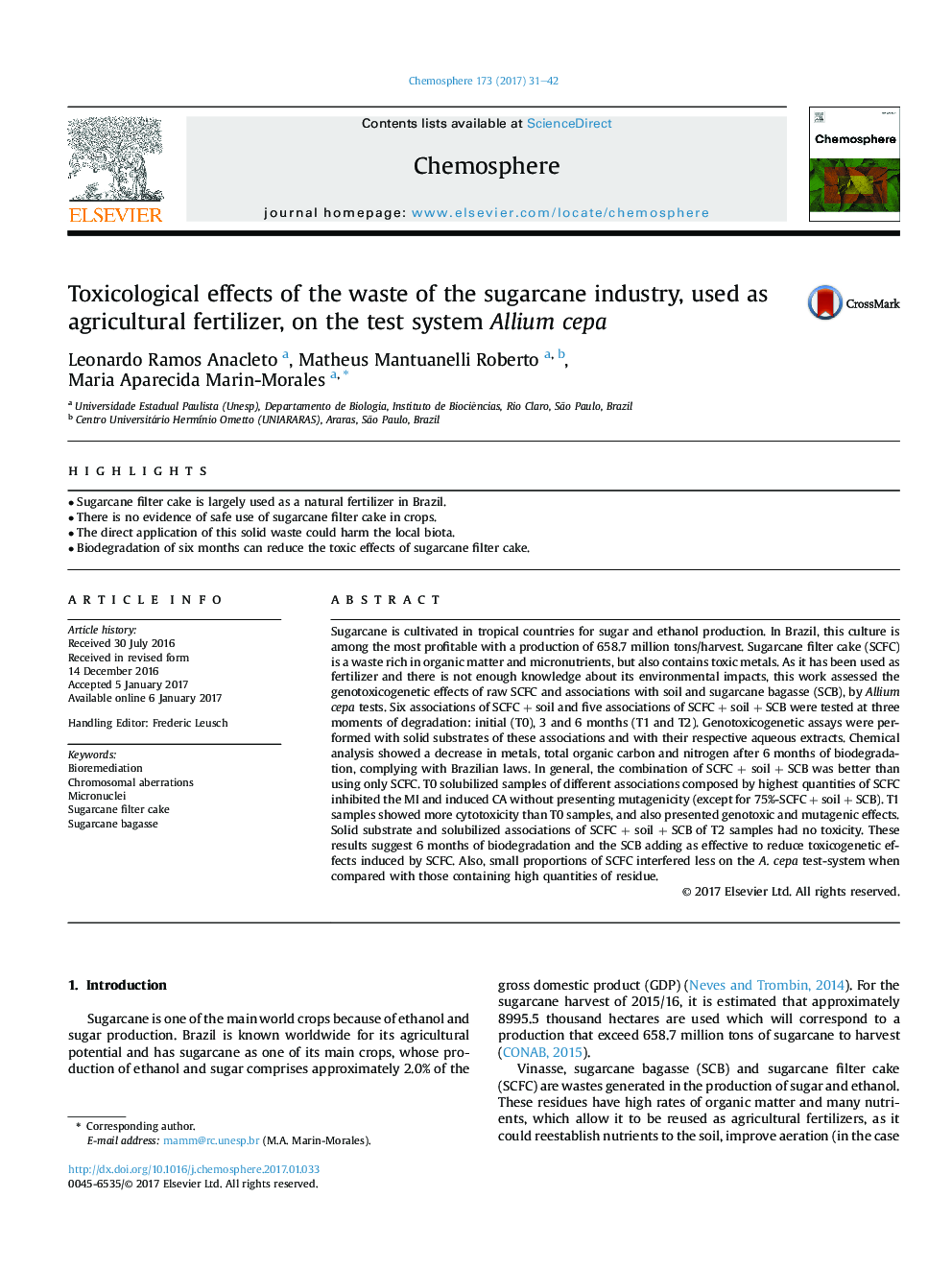| Article ID | Journal | Published Year | Pages | File Type |
|---|---|---|---|---|
| 5747418 | Chemosphere | 2017 | 12 Pages |
â¢Sugarcane filter cake is largely used as a natural fertilizer in Brazil.â¢There is no evidence of safe use of sugarcane filter cake in crops.â¢The direct application of this solid waste could harm the local biota.â¢Biodegradation of six months can reduce the toxic effects of sugarcane filter cake.
Sugarcane is cultivated in tropical countries for sugar and ethanol production. In Brazil, this culture is among the most profitable with a production of 658.7 million tons/harvest. Sugarcane filter cake (SCFC) is a waste rich in organic matter and micronutrients, but also contains toxic metals. As it has been used as fertilizer and there is not enough knowledge about its environmental impacts, this work assessed the genotoxicogenetic effects of raw SCFC and associations with soil and sugarcane bagasse (SCB), by Allium cepa tests. Six associations of SCFC + soil and five associations of SCFC + soil + SCB were tested at three moments of degradation: initial (T0), 3 and 6 months (T1 and T2). Genotoxicogenetic assays were performed with solid substrates of these associations and with their respective aqueous extracts. Chemical analysis showed a decrease in metals, total organic carbon and nitrogen after 6 months of biodegradation, complying with Brazilian laws. In general, the combination of SCFC + soil + SCB was better than using only SCFC. T0 solubilized samples of different associations composed by highest quantities of SCFC inhibited the MI and induced CA without presenting mutagenicity (except for 75%-SCFC + soil + SCB). T1 samples showed more cytotoxicity than T0 samples, and also presented genotoxic and mutagenic effects. Solid substrate and solubilized associations of SCFC + soil + SCB of T2 samples had no toxicity. These results suggest 6 months of biodegradation and the SCB adding as effective to reduce toxicogenetic effects induced by SCFC. Also, small proportions of SCFC interfered less on the A. cepa test-system when compared with those containing high quantities of residue.
